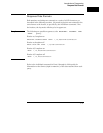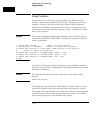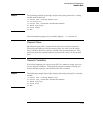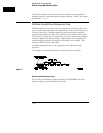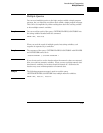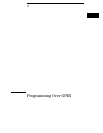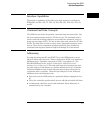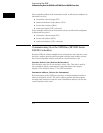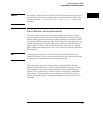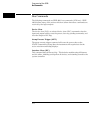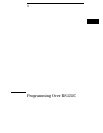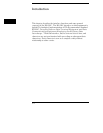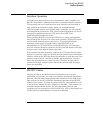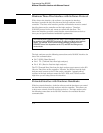
Interface Capabilities
The interface capabilities of the 1660-series logic analyzers, as defined by
IEEE 488.1 are SH1, AH1, T5, TE0, L3, LE0, SR1, RL1, PP0, DC1, DT1, C0,
and E2.
Command and Data Concepts
The GPIB has two modes of operation: command mode and data mode. The
bus is in command mode when the ATN line is true. The command mode is
used to send talk and listen addresses and various bus commands, such as a
group execute trigger (GET). The bus is in the data mode when the ATN line
is false. The data mode is used to convey device-dependent messages across
the bus. These device-dependent messages include all of the instrument
commands and responses found in chapters 8 through 35 of this manual.
Addressing
By using the front-panel I/O and SELECT keys, the GPIB interface can be
placed in either talk only mode, "Printer connected to GPIB," or in addressed
talk/listen mode, "Controller connected to GPIB," (see chapter 16, "The
RS-232/GPIB Menu" in the Agilent Technologies 1660-Series Logic
Analyzer User’s Reference). Talk only mode must be used when you want
the logic analyzer to talk directly to a printer without the aid of a controller.
Addressed talk/listen mode is used when the logic analyzer will operate in
conjunction with a controller. When the logic analyzer is in the addressed
talk/listen mode, the following is true:
•
Each device on the GPIB resides at a particular address ranging from 0 to
30.
•
The active controller specifies which devices will talk and which will listen.
•
An instrument, therefore, may be talk-addressed, listen-addressed, or
unaddressed by the controller.
Programming Over GPIB
Interface Capabilities
2–3



